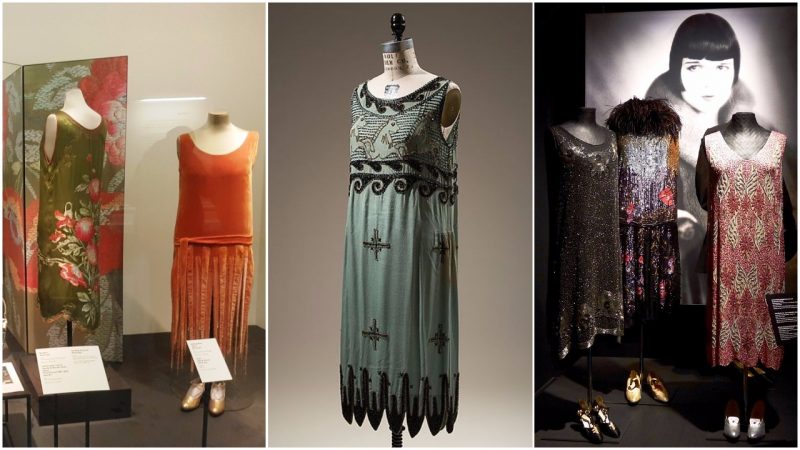During the 1920s, middle-class Americans were seized by fashion trends and bought new clothes, appliances, automobiles or anything else that indicated one’s level of prosperity. When it came to women’s clothes, glamor ruled, due to the influence of the motion picture industry and its ravishing stars.
Women admired the styles of Greta Garbo, Colleen Moore, and Louise Brooks. These actresses inspired a generation of young women in the 1920s, popularly known as “flappers,” who liked short dresses and skirts, wore excessive makeup, bobbed their short hair, listened to jazz, and reveled in the irreverent behavior that disdained tradition female roles. Flappers were a key part of the Roaring Twenties, featuring a jazz culture quickly exported to Europe.
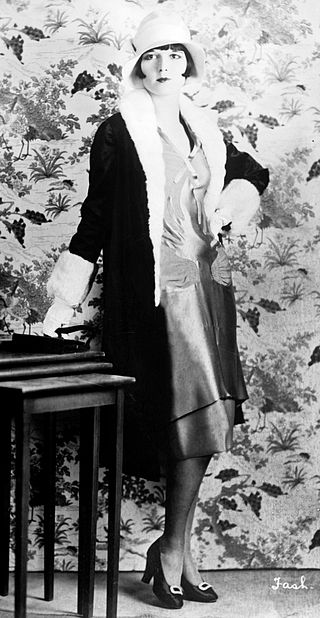
Flappers’ attire largely followed French fashion, and primarily the revolutionary creations of Coco Chanel. The suffragette movement as well as the rapid spread of American jazz and the dancing moves that went along with it all played a part. The new, liberating spirit made women abandon confining corsets and replace them with camisoles and bloomers, which were soon after shortened to panties and knickers. These transformed undergarments conformed to the ideals of a more boyish figure with flatter chest and hips.
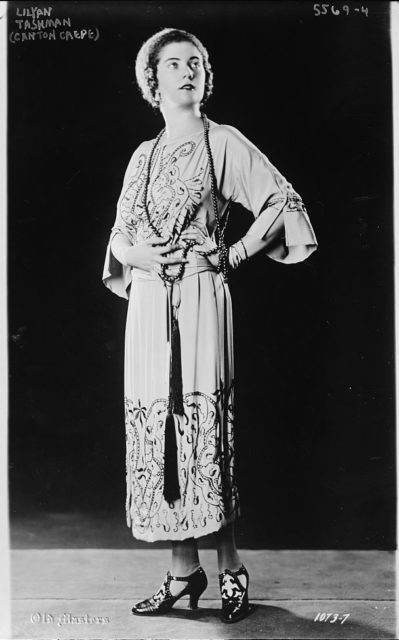
For the first time in centuries, women wore free and spirited dresses that allowed them to dance boldly.
Flapper dresses were straight and often loose, sometimes without any sleeves, leaving arms bare at any time of the year. Women wore cardigans and jackets when it was chilly. The dresses were cut straight and the waistline dropped to the hips, deemphasizing the female form. The hemlines rose to just below the knee, and later inches above, exposing women’s legs when they walked or danced.
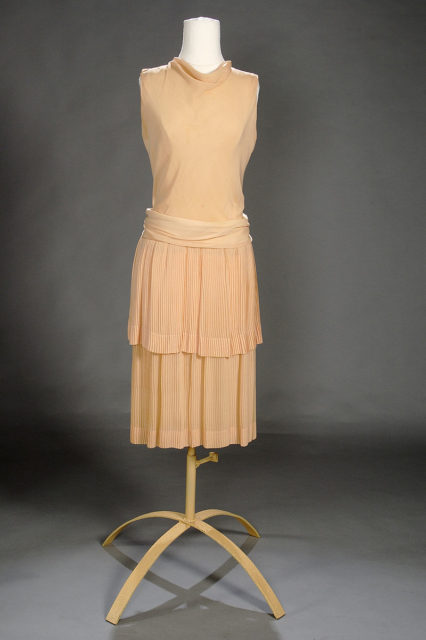
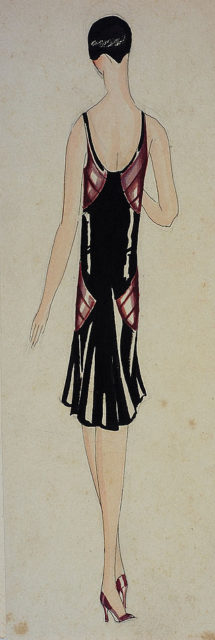
And when the flappers danced, their skirts or dresses definitely flew high enough to show their legs. Some flappers applied rouge to their knees to enhance the view. No one had seen so much skin in public. Underneath their dresses, flappers wore rayon or silk stockings, now in beige color, which added to the illusion of nudity, held by garters.
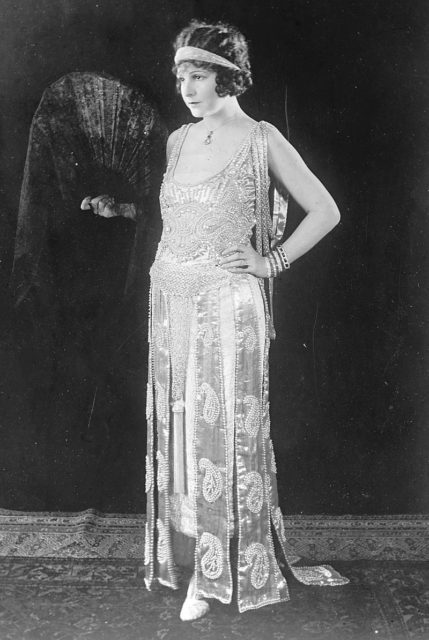
The new proper attire for women was enforced by morning, afternoon, and evening activities. In the early period of the decade, wealthy women changed from a morning to an afternoon dress or a “tea gown,” which was less form-fitting than the evening gowns. The day dresses were influenced by the designs of Chanel, who offered comfy, easy-to-wear dresses in neutral colors and jersey fabrics. Tea gowns were elegant, light, and often white, adorned with sashes, bows, or artificial flowers at the waist.
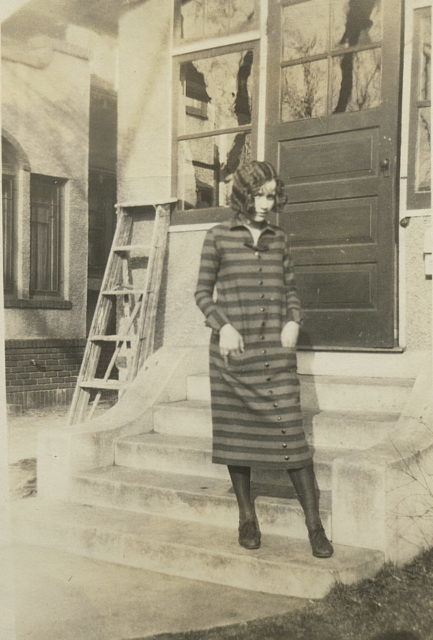
The evening gowns are what we would call “flapper dresses.” These rich and flashy garments were governed by glitz and glam and only the wealthiest of flappers could afford one. They were made of layers of light pastel chiffon or heavy velvet, embellished with clusters of crystals, beads, rhinestones, or fringes that accented the layers.
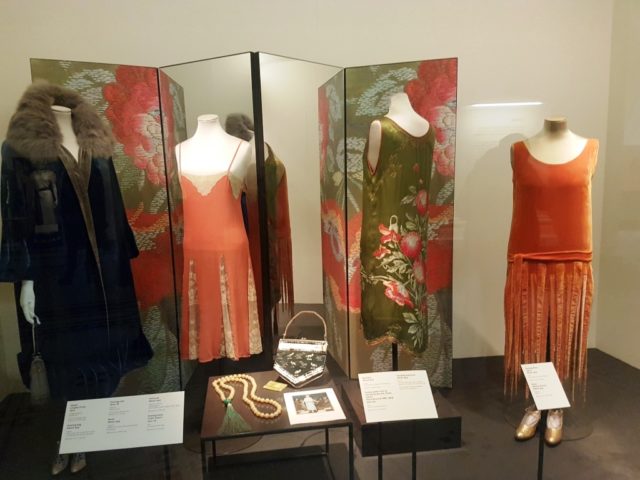
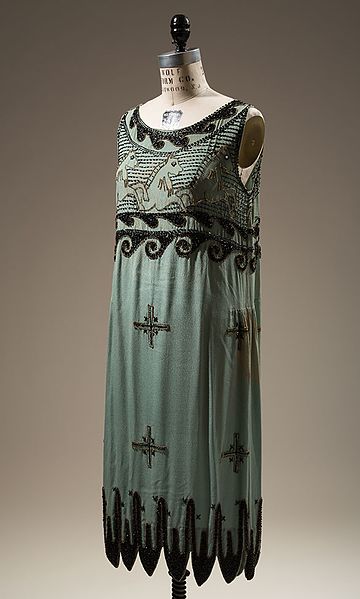
The fabrics that these dresses were made of were expensive and featured bold designs of geometric motifs, often created via sequins, echoing the Art Deco style prevalent at the time. One of the key designers at the time was Elsa Sciaparellis, highly influenced by the “beyond the real” art.
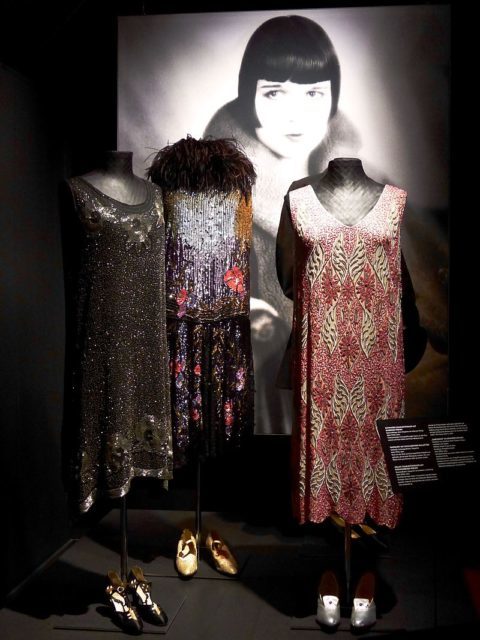
Designers from Callot Sears often used metal sequins but only sparingly, since they were quite heavy. The metal sequins and threads were often too expensive for the less prosperous women, so this luxurious ensemble was replaced by a homesewn shiny taffeta dress with large silk flowers.
The dresses were accompanied by high heels, which also came into vogue at the time, reaching two to three inches in height. Favored shoe styles were T-straps and Mary Janes in classic black, gold, silver, and nude shades.
